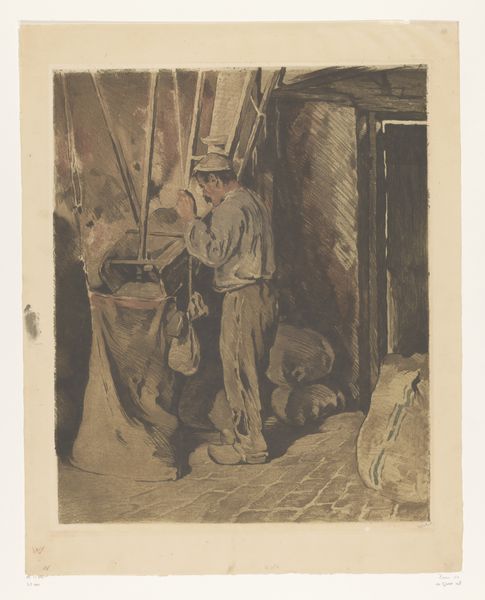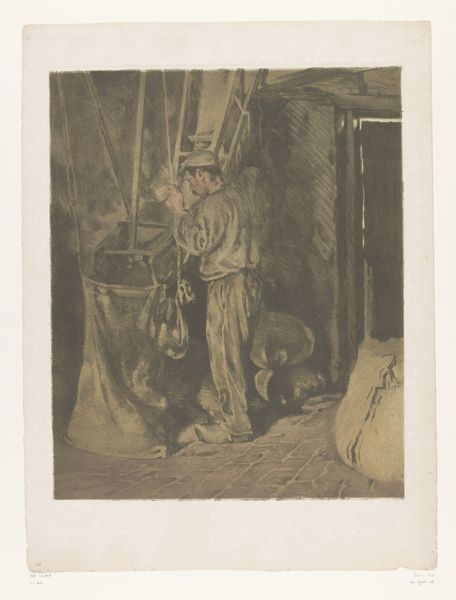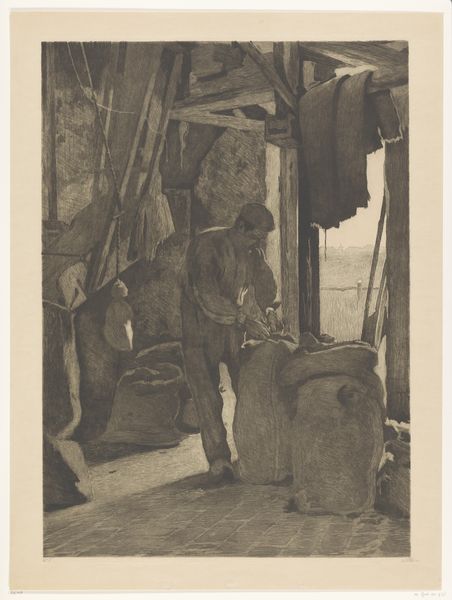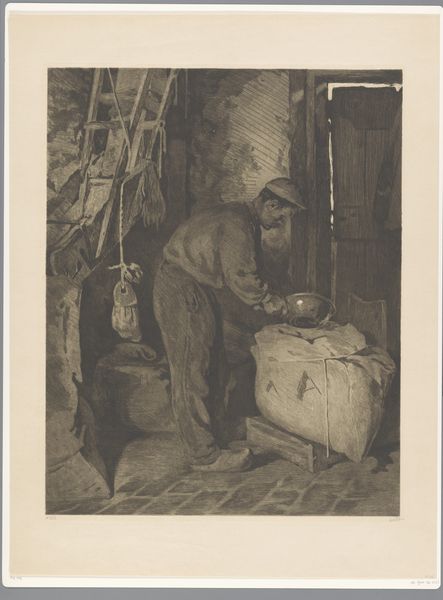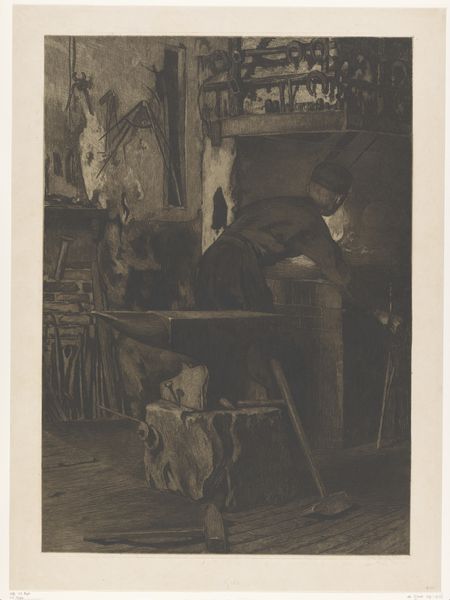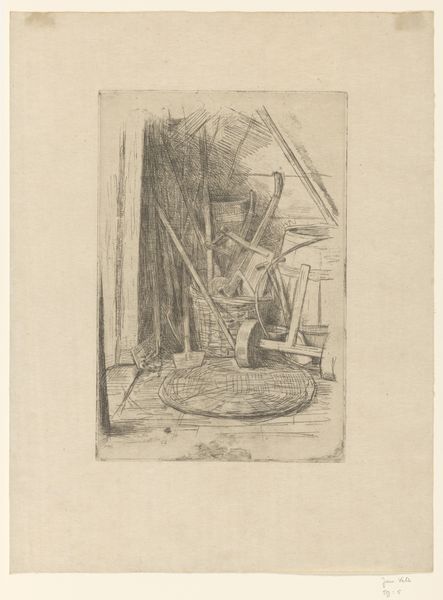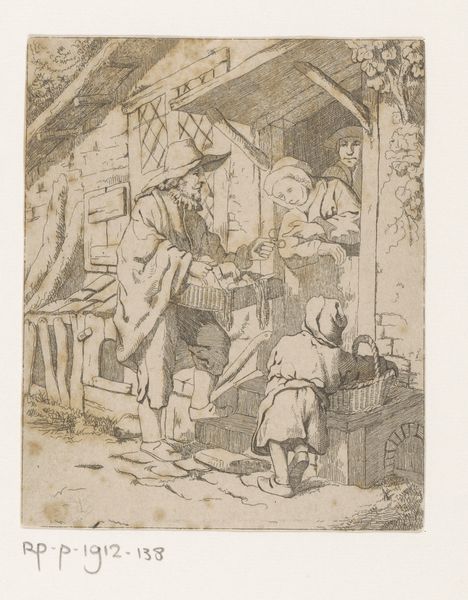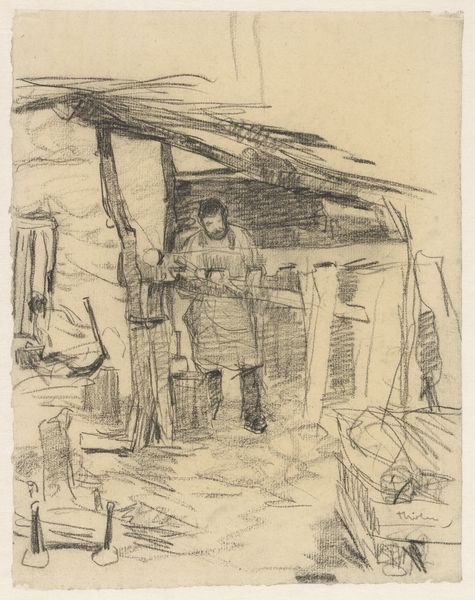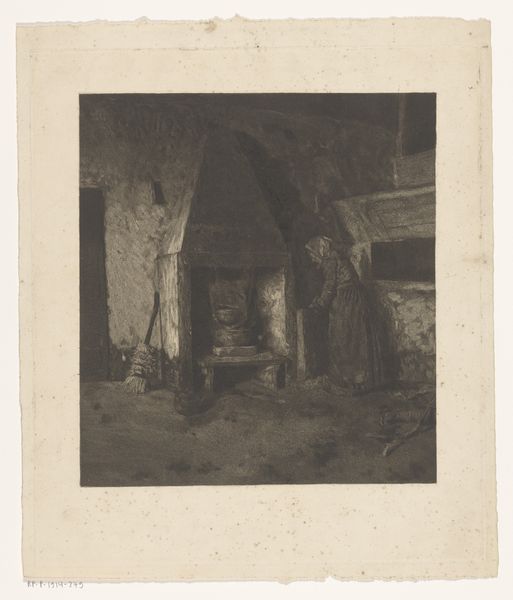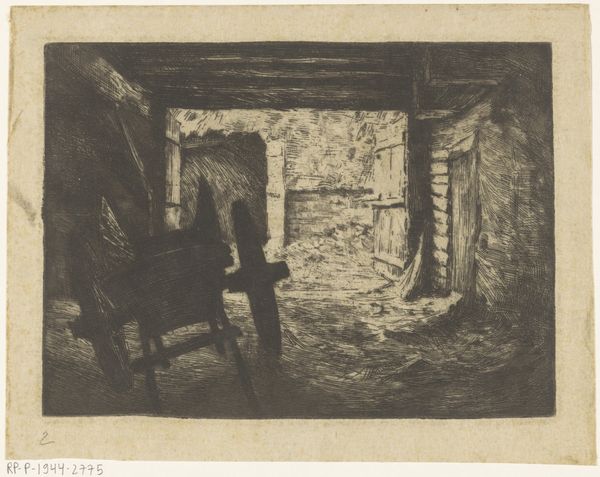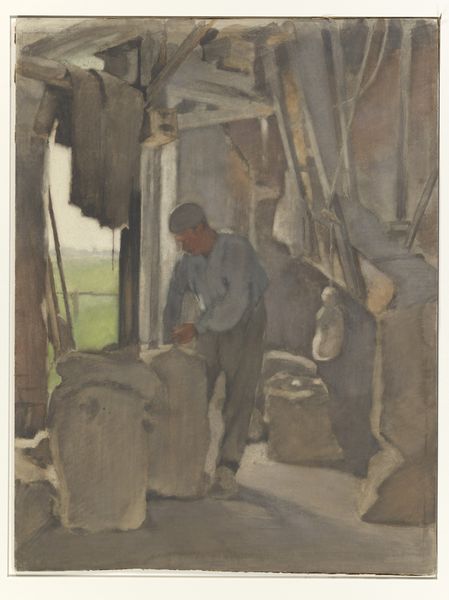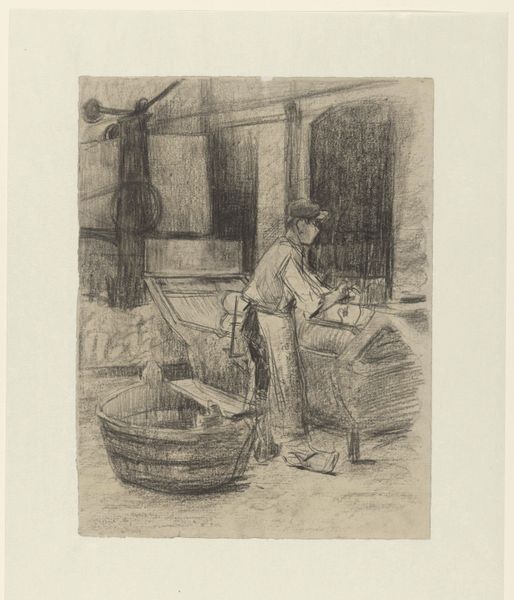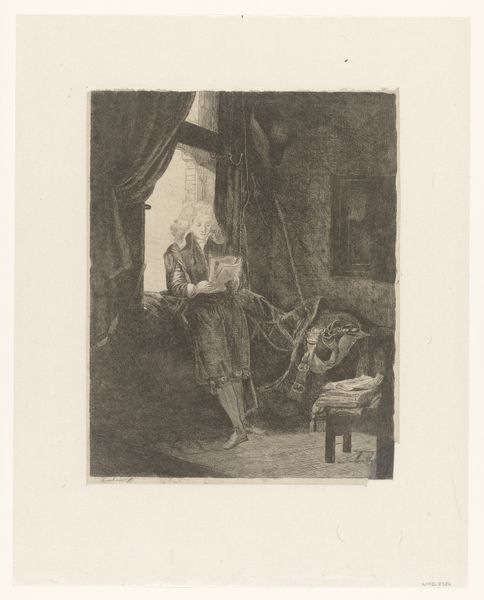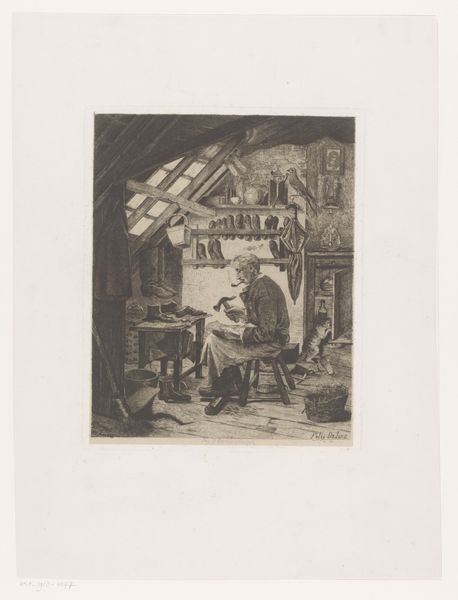
drawing, print, etching
#
drawing
#
water colours
#
dutch-golden-age
# print
#
etching
#
landscape
#
coloured pencil
#
genre-painting
#
watercolor
#
realism
Dimensions: height 550 mm, width 452 mm
Copyright: Rijks Museum: Open Domain
Curator: This is Willem Witsen’s "Molenaar bij een zak meel," or "Miller by a Sack of Flour," likely created between 1910 and 1911. It’s an etching printed with watercolor and colored pencil, currently residing here at the Rijksmuseum. Editor: Immediately, it evokes this very specific sensation—a dusty, muted kind of quiet. Does that make sense? Like you can almost smell the grain, feel the stillness before the next bustle of activity. Curator: It does. Witsen was part of the Amsterdam Impressionism movement, very interested in capturing daily life, the working class, within specific locations and social strata. This particular scene echoes those familiar agrarian themes popular since the Dutch Golden Age. Editor: Absolutely! It's very genre painting, this intimate glimpse into ordinary labor. And yet, there's something almost… romantic about it? The lighting is soft, casting shadows that feel more contemplative than dreary. It’s like he’s dignifying labor through subtle romanticization. Curator: Yes, there’s an interest in both accurately portraying and aesthetically elevating. Witsen was also invested in the revival of printmaking, especially etching, within the art world at this time. This focus elevates a scene typically outside elite tastes, and situates that scene into the mainstream art economy. Editor: And that etching technique, with those delicate washes of watercolor, lends this such depth. You almost feel as though you’re there, stepping onto those worn cobblestones. What do you think, what might have been Willem’s take on this subject. It really stands out with all of this consideration for color, light, class, material... It certainly presents itself as more that the simple scene suggests... Curator: Perhaps he wished to highlight and even critique urbanity by calling back the traditional landscapes? Editor: That really shifts how I'll approach it now. Curator: Yes, looking at how history can give meaning to imagery. Editor: Food for thought! Well, time to leave this piece with its secrets intact for the next visitor. Curator: Agreed. Hopefully they feel prepared to examine the print from a socio-economic perspective.
Comments
No comments
Be the first to comment and join the conversation on the ultimate creative platform.
